In today’s fast-paced world, finding efficient ways to prepare meals without compromising on flavor is essential. One such quick, yet delectable dish is frozen gyoza, a popular Japanese dumpling filled with vegetables, meat, or seafood.
While most people traditionally cook gyoza in a pan, we are here to share a unique method of cooking frozen gyoza using a rice cooker. Yes, you heard that right! This method not only saves time but also adds a new level of convenience. Let’s dive into this easy and mouth-watering recipe!
Why Use a Rice Cooker for Frozen Gyoza?
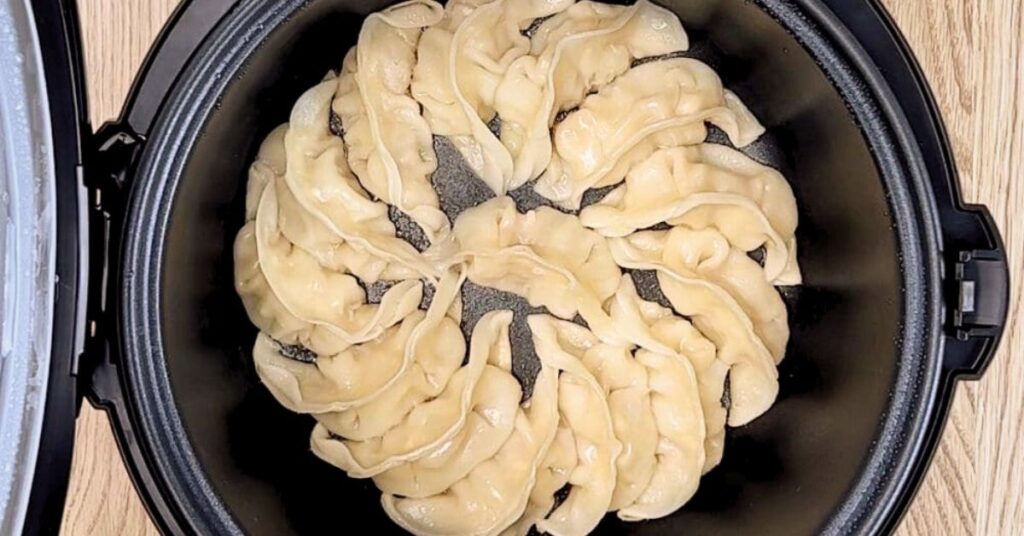
The rice cooker is a kitchen tool most associated with making perfect rice, but its versatility extends far beyond that. When it comes to frozen gyoza, the rice cooker offers a hands-off cooking method that guarantees even cooking, minimal cleanup, and, importantly, delicious results. Here are some reasons why this method works so well:
- Uniform steaming – The rice cooker creates a sealed, controlled environment that steams the gyoza evenly, maintaining the juicy filling while crisping the base slightly.
- One-pot meal – You can add rice or vegetables at the bottom while the gyoza cooks on top, turning your gyoza into a complete meal.
- Set it and forget it – You don’t have to monitor the cooking process. Just set your rice cooker, and it’ll do the work for you.
Now that we know why using a rice cooker is such a game-changer, let’s move on to the step-by-step recipe for making frozen gyoza in a rice cooker.
Ingredients You’ll Need
To get started, gather the following ingredients:
- Frozen gyoza (choose your favorite variety: pork, chicken, shrimp, or vegetable)
- 1 cup of water
- 1 tablespoon of sesame oil (for added flavor)
- 1 teaspoon of soy sauce
- Optional: Vegetables (carrots, broccoli, bell peppers, or bok choy for steaming)
This ingredient list is straightforward and customizable. The use of frozen gyoza eliminates the need for time-consuming preparation, making this method perfect for busy weeknights or when you’re craving a quick snack.
Step-by-Step Guide: How to Cook Frozen Gyoza in a Rice Cooker
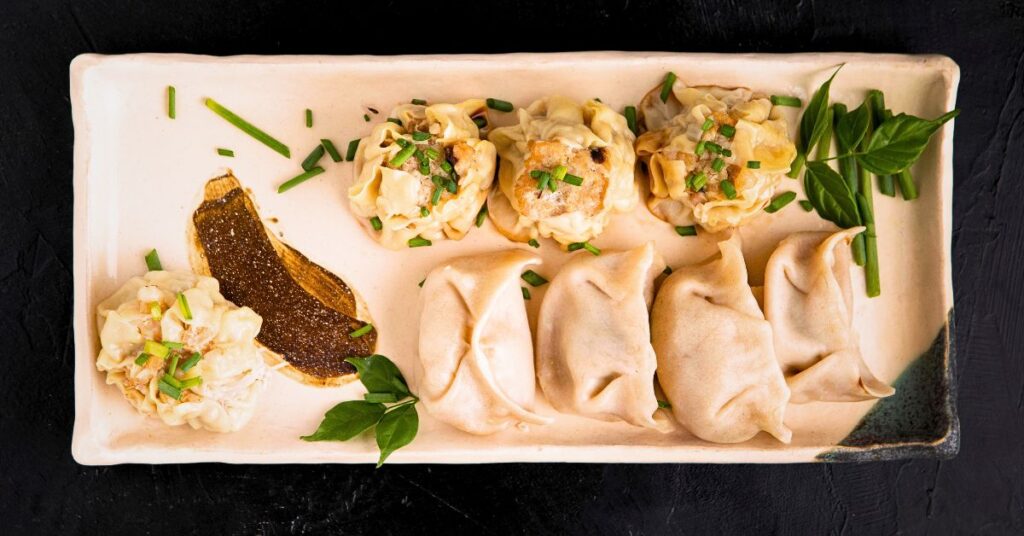
Step 1: Prepare Your Rice Cooker
Begin by ensuring your rice cooker is clean and ready for use. If you have a multi-function rice cooker, set it to the steaming or cook mode. Some rice cookers have a steam tray, which works perfectly for this recipe. If yours doesn’t have one, you can improvise by placing a heat-resistant plate or foil on top of the rice.
Step 2: Arrange the Gyoza
Take the frozen gyoza out of the freezer and arrange them in the rice cooker’s steaming tray or directly on a foil lining inside the cooker. Make sure they are not stacked on top of each other, as this will allow the steam to reach each dumpling evenly.
Step 3: Add Water and Flavorings
Pour 1 cup of water into the rice cooker, ensuring it doesn’t touch the gyoza directly. The water will create steam, which is crucial for cooking the gyoza evenly. For added flavor, drizzle 1 tablespoon of sesame oil and 1 teaspoon of soy sauce over the gyoza.
The sesame oil helps crisp the bottoms slightly while the soy sauce enhances the umami flavors.
Step 4: Set the Cooker and Let It Steam
Close the rice cooker lid and set it to the cooking or steaming function. The process usually takes around 15-20 minutes, depending on your rice cooker model and the size of the gyoza. You’ll know they’re ready when the gyoza skin becomes translucent, and the filling is fully heated.
Step 5: Optional – Add Vegetables
To make it a complete, balanced meal, consider adding vegetables to steam alongside the gyoza. Chop your choice of veggies into bite-sized pieces and arrange them either beneath the gyoza (if using a steaming tray) or alongside the dumplings. This way, you’re creating a healthy side dish that cooks in the same pot.
Step 6: Serve and Enjoy!
Once the rice cooker finishes steaming, carefully open the lid and remove the gyoza using tongs or a spatula. You’ll notice that they’re tender on top with a slightly crisped base. Serve them immediately with your favorite dipping sauce – soy sauce, rice vinegar, or chili oil are all excellent options.
Tips for Perfect Rice Cooker Gyoza
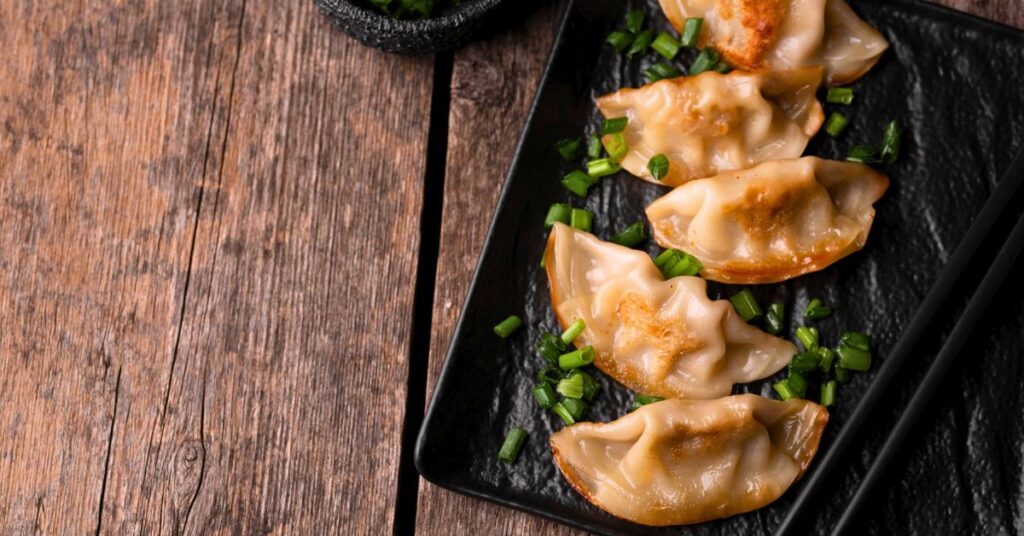
Cooking gyoza in a rice cooker is incredibly simple, but there are a few tips that can take your dish to the next level:
- Don’t overcrowd the cooker – Make sure the gyoza aren’t stacked on top of each other, as this can cause them to cook unevenly.
- Use parchment paper – If you’re worried about sticking, line the rice cooker with parchment paper or a small layer of foil before placing the gyoza.
- Add aromatics – To enhance the flavor further, throw in a few slices of ginger, garlic, or chopped green onions along with the water. The steam will infuse the gyoza with these delicious aromas.
- Experiment with fillings – Although this recipe is designed for frozen gyoza, you can also try using homemade gyoza or frozen dumplings from other cuisines like Korean mandu or Chinese jiaozi.
Variations to Explore
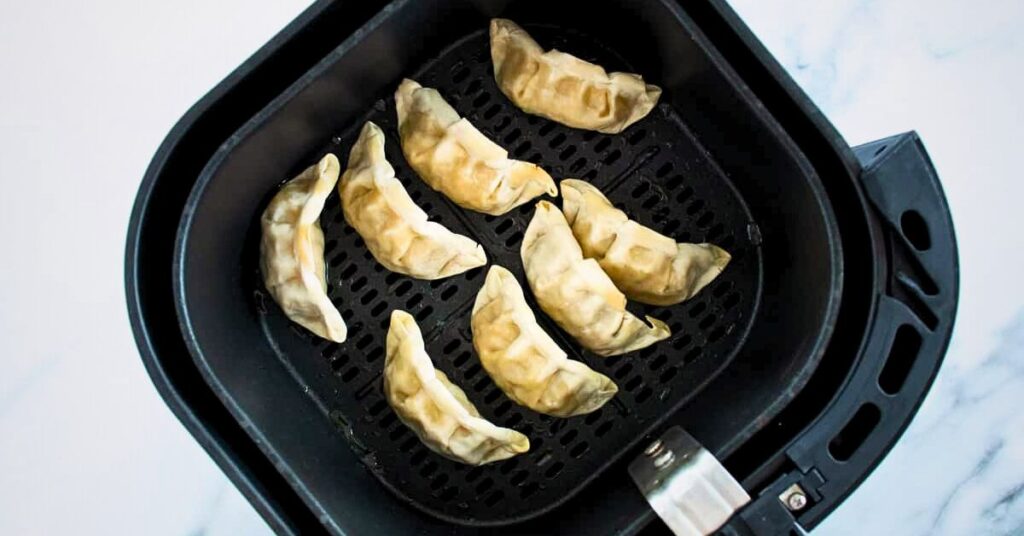
The beauty of using a rice cooker for gyoza lies in the endless variations you can explore. Here are a few ideas to inspire your next meal:
- Rice and Gyoza Combo: Prepare your favorite type of rice, such as jasmine or brown rice, in the cooker while the gyoza steams on top. This creates a filling and cohesive meal without needing multiple cooking appliances.
- Noodle Stir-fry Base: Cook some noodles separately and stir-fry them with soy sauce, sesame oil, and vegetables. Place the gyoza on top for a delicious noodle and dumpling fusion.
- Gyoza Soup: Add a broth base (like chicken or vegetable stock) into the rice cooker with the gyoza to create a warming gyoza soup. Toss in some vegetables, tofu, or noodles for added substance.
Nutritional Benefits of Gyoza in a Rice Cooker
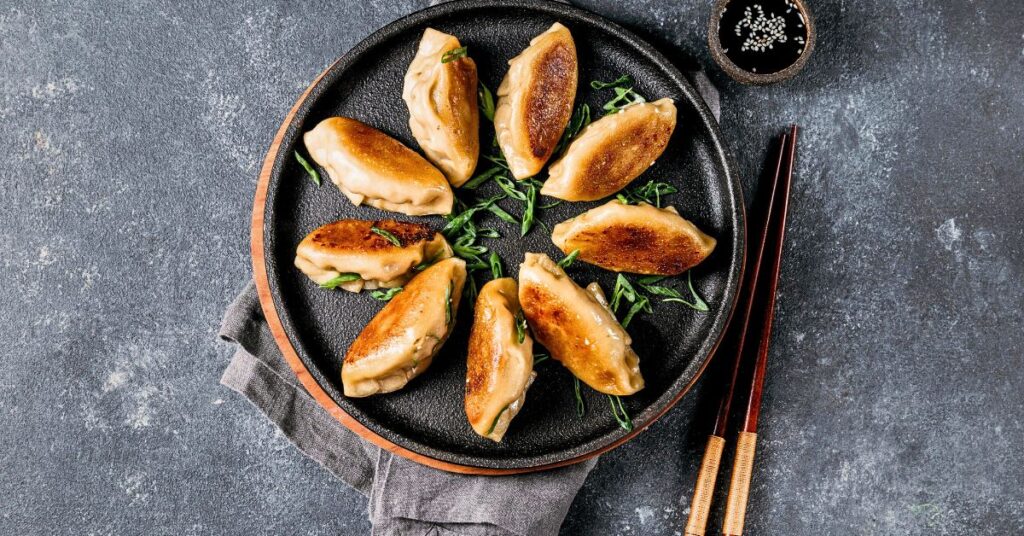
Although gyoza is often considered a comfort food, it can still be part of a balanced diet, especially when prepared in a rice cooker. By steaming the gyoza, you avoid the excess oil used in traditional pan-frying methods. This method also retains the dumplings’ delicate flavor without overpowering them with grease.
Additionally, the filling typically includes a mixture of protein and vegetables, making gyoza a good source of nutrients. Pairing it with steamed vegetables or rice further enhances the meal’s nutritional profile, adding fiber, vitamins, and essential minerals.
Conclusion
Cooking frozen gyoza in a rice cooker is an innovative and simple method that yields delicious, perfectly steamed dumplings with minimal effort. Whether you’re making a quick snack, preparing a full meal, or trying to simplify your cooking routine, this technique is sure to become a household favorite.
The best part? You can easily customize this recipe with different flavors, fillings, and sides to suit your taste.
So, next time you’re craving gyoza, grab that rice cooker and enjoy a fuss-free, flavorful meal in no time.
Frequently Asked Questions
Can I cook frozen gyoza directly in a rice cooker without thawing them first?
Yes, you can cook frozen gyoza directly in a rice cooker without thawing. The rice cooker’s steaming process is designed to cook the gyoza evenly from frozen. No need to defrost them beforehand, saving you time and effort.
How long does it take to cook frozen gyoza in a rice cooker?
Cooking frozen gyoza in a rice cooker typically takes around 15-20 minutes, depending on your rice cooker model and the size of the dumplings. You should check the gyoza once the cooker has finished its cycle to ensure they are fully cooked.
Can I cook rice and gyoza at the same time in the rice cooker?
Yes, you can cook both rice and gyoza simultaneously in a rice cooker. Place the rice and water at the bottom and use a steaming tray or foil to hold the gyoza above the rice. This allows you to create a complete, well-balanced meal with minimal effort.
Will the gyoza be crispy when cooked in a rice cooker?
While cooking frozen gyoza in a rice cooker typically results in steamed dumplings, you can achieve a slightly crispy bottom by adding a small amount of sesame oil to the water in the cooker. The steam will ensure tenderness, while the oil can help the base crisp up a little.
What kind of dipping sauce pairs best with gyoza made in a rice cooker?
Popular dipping sauces for gyoza include:
Soy sauce with rice vinegar
Chili oil for a spicy kick
Ponzu sauce (a citrusy soy-based sauce)
Garlic soy sauce for extra savory flavor
Feel free to mix your favorite ingredients to create a personalized sauce that enhances the flavors of the gyoza.
Can I add vegetables to the rice cooker when making gyoza?
Yes! You can easily add vegetables such as broccoli, carrots, bell peppers, or bok choy to the rice cooker while steaming gyoza. The vegetables will cook in the same steam, making for a complete, healthy meal without using additional pots or pans.
Can I make homemade gyoza in the rice cooker using this method?
Absolutely! While this method is designed for frozen gyoza, you can also use it for homemade gyoza. The cooking time might be slightly shorter since homemade gyoza may not be as thick as frozen ones, but the process remains the same. Just be sure to steam them until the skins turn translucent, and the filling is cooked through.
What are the nutritional benefits of using a rice cooker for gyoza?
Cooking gyoza in a rice cooker is a healthier alternative to pan-frying because it uses less oil, reducing the overall fat content. The steaming process locks in moisture and nutrients without adding unnecessary calories, making this a more balanced option for those looking to enjoy gyoza while watching their diet.
How do I know when the gyoza is fully cooked in the rice cooker?
You’ll know the gyoza is done cooking when the dumpling skin turns translucent, and the filling inside is piping hot. A fully cooked gyoza will feel tender and soft to the touch, with a slight crispness if you’ve added oil for frying.
Can I make gyoza soup in a rice cooker?
Yes, you can turn your steamed gyoza into a delicious gyoza soup by adding broth (chicken, vegetable, or miso) to the rice cooker. Include vegetables, tofu, or noodles for a complete meal. The gyoza will absorb the broth’s flavors, creating a comforting and filling dish.
